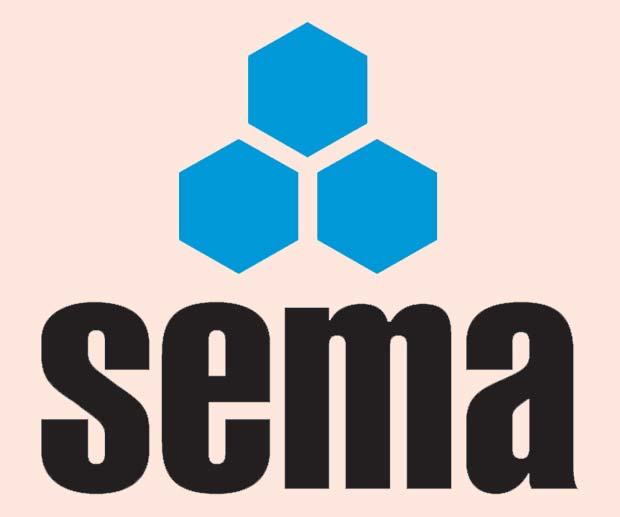Our first question this month enquires about the flexing of beams and the second asks, what should we be doing to control the inspections of our racking.
 Beam Flexing
Beam Flexing
Q. A few months ago we bought some pallet racking from a company who were told that the heaviest pallet we would be using would be a maximum weight of 1000kgs of glass. We have started to notice that the beams in some areas were bowing with 800kgs for one pallet and 900kgs for the other, side by side. A representative from the company who supplied and fitted the racking said that there was an acceptable amount of bowing allowed and what we were experiencing was acceptable. Could you clarify what the acceptable levels of bowing are as my worry is that if we keep using this racking as we are at the moment, we may end up with an accident.
A. SEMA have no control over what standards racking might be sold against and this is a matter between the purchaser and seller.
Beams deflect under load and this can be quite noticeable when applied loads get towards the maximum allowed. The SEMA Codes of Practice allows a maximum deflection of span / 200 when a pair of beams is under maximum load.
For beam length of 2700 mm this would be 2700 / 200 =13.5 mm. This may not seem a lot however, it is quite noticeable if the run of beams is viewed along the aisle when it can look something like a washing line. If you wish to check this, we suggest the use of a taut string line immediately under the beam and measure vertically from the string line to the underside of the beam at centre and ends of beams. The temptation to measure to the floor should be avoided as the floor may not be level.
If your beams are getting close to the top of the pallet below you may have inadequate clearances. SEMA recommend a minimum of 75 mm clearance from the top of the load to the underside of the beam to allow the pallet to be handled in and out of its location although this value is increased as the height of the rack increases. If the vertical clearance is not sufficient then you may have to re-profile the rack by re-positioning the beams to increase the nominal space between beams. Be aware that this will result in a longer free length of upright between the beams so the upright will not carry the same load as before and, therefore, you can expect to have to de-rate the carrying capacity of your rack and change the load signs which your supplier should have attached to the rack when it was installed.
Control of Inspections
Q. What and when should we be doing to control the inspections of our racking and to what standards?
A. SEMA publish a booklet called “Guide to the conduct of Pallet Racking and Shelving Surveys” and guidance is also available from the Health and Safety Executive in a publication called “Warehousing and storage – A guide to Health and Safety “HSG76.
Essentially both of these documents emphasise the ‘onion skin approach’ with several layers of safety incorporated into the process.
SEMA regularly runs rack safety awareness training which covers this ‘onion skin’ approach and aspects of racking inspection.
The first layer are the truck drivers and pickers who are encouraged to report any damage that they might see and to report any accidents as they occur during day to day activities.
The second layer is the supervisor’s weekly inspection normally carried out as part of a patrol of the warehouse on a weekly basis with written records kept.
The third layer is a formal inspection of the racking carried out by a competent person such as a SEMA Approved Inspector at either six monthly or yearly intervals depending on the activity level of a warehouse. This may seem a bit vague however it is essentially down to a risk assessment. For example, a warehouse operating 24/7 in a fast-moving environment might need more frequent formal inspections than one with a slow-moving single shift operation.
Generally, with a new racking installation or layout it is advisable to carry out the first formal inspection 4 months after installation and then to follow the usual formal inspection regime. Leaving the first formal inspection for a year in the first instance and then shortening the interval if a lot of damage is found can be expensive also risks exposing employees to danger.
SEMA Annual Safety Conference 2020
The 2020 SEMA Safety Conference has been scheduled for Thursday, 5 November; the venue will be the National Motorcycle Museum, Solihull.
SEMA Rack Safety Awareness and Inspection Courses
SEMA runs a one-day safety course on Rack Safety Awareness and Inspection, aimed at end users, giving an in-depth look at the need for inspections, how to conduct an assessment and what actions to take when this is completed.
SEMA Approved Rack Inspectors Qualification
This qualification is aimed at professionals who conduct rack surveys as an integral and significant part of their duties.
SEMA Publications
SEMA has 26 publications in stock – Codes of Practice, ‘Guides’ and European documents – all of which are available from our Offices.
SEMA USERS Club
SEMA runs a USERS Club designed to be of benefit to purchasers and users of storage equipment. Members receive newsletters, access to specialised events and discounted rates on publications and codes of practice.
SEMA




Comments are closed.